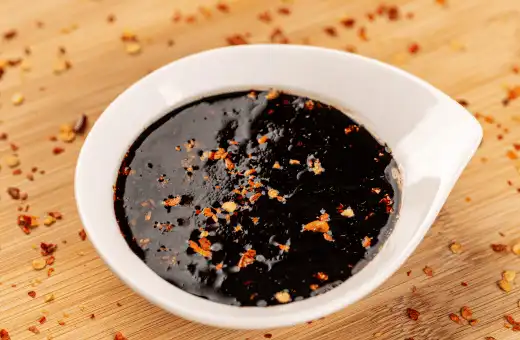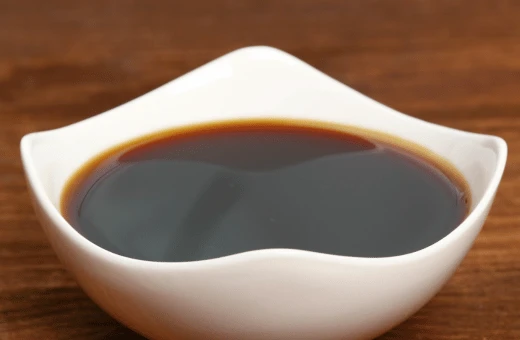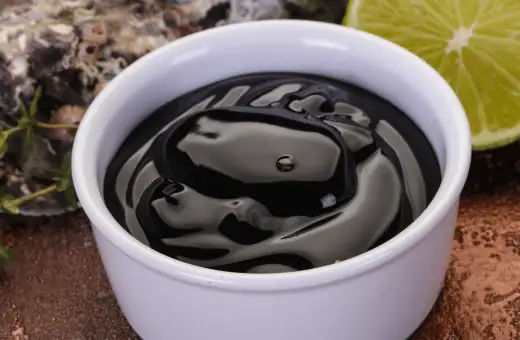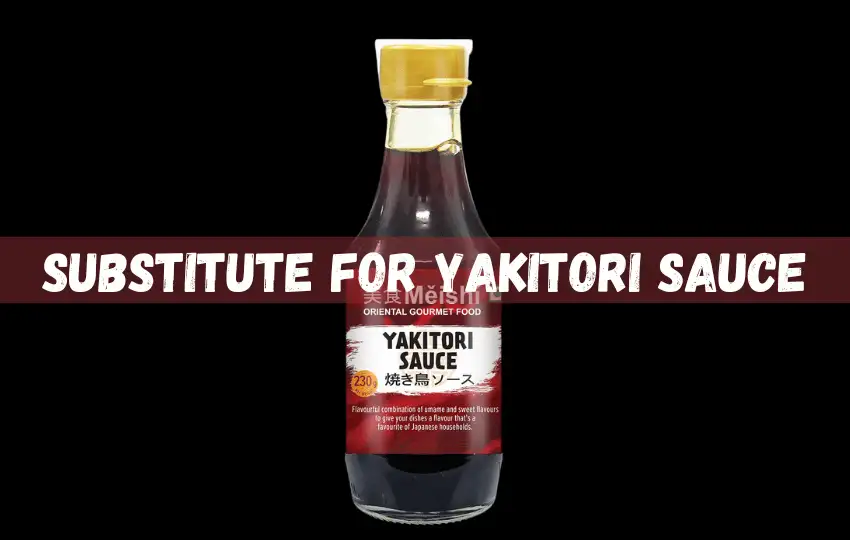If you’re a fan of Yakitori and Japanese cuisine, you certainly know how important the Yakitori sauce is to the dish.
Yakitori sauce is a savory and slightly sweet sauce that is used to enhance the flavor of grilled chicken skewers.
However, what if you run out of Yakitori sauce or suddenly can’t find it? Don’t worry; as an experienced home cook and chef, I am here to help you out.
In this post, I will share with you the 16 best substitutes for Yakitori sauce with ratios and how to use them properly.
In short, " What can I use instead of yakitori sauce?" Soy Sauce and Mirin, Teriyaki Sauce, Hoisin Sauce, BBQ Sauce, Worcestershire Sauce, Sesame Oil and Soy Sauce, Maple Syrup and Soy Sauce, Ketchup, Soy Sauce, Honey, Miso Paste, Coconut Aminos and many more.
What is yakitori sauce, and what does yakitori sauce taste like?
Yakitori sauce is a savory and sweet Japanese barbecue sauce made with mirin, sake, soy sauce, and sugar.
It has a complicated flavor profile consisting of salty umami notes blended with the sweetness of sugar.
The addition of ginger often gives it a slightly spicy kick as well.
Yakitori sauce can be used in many dishes, including yakitori grilled chicken skewers, marinated meats, steamed vegetables and more.
Uses of yakitori sauce
Yakitori sauce is a type of Japanese tare (a thick, sweet-savory glaze) traditionally used on grilled skewers of various meats, vegetables and seafood.
The classic version consists of soy sauce, mirin (sweet rice wine), sake and sugar.
The sweetness of the mirin and sugar balances out the saltiness of the soy sauce, creating a flavor profile that’s both savory and umami-rich.
The tare is brushed onto the yakitori skewers during grilling but can also be used as a marinade for extra flavor.
It can also be served with cooked chicken dishes like teriyaki or karaage—a fried chicken dish popular in Japan—to add an extra boost of flavor to complement the savory ingredients.
To create an even richer profile for yakitori sauces, some chefs may include other ingredients such as garlic, ginger or chili peppers.
Yakitori sauce is also quite versatile when preparing other dishes such as donburi—a type of Japanese rice bowl topped with fish or meat—or soba noodles.
Yakitori sauce can also be served as a dipping sauce for tempura vegetables or sushi rolls, adding an extra layer of complex flavors to these dishes.
Additionally, yakitori sauce can be used as a topping for grilled fish or vegetables on their own if desired.
Where to buy yakitori sauce?
If you are looking for where to buy yakitori sauce, there are a few different places you can go. Many specialty food stores carry it, as do some international grocery stores.
You can also order online from many retailers that provide a variety of diverse flavors and types of yakitori sauce.
Best substitutes for yakitori sauce
1. Soy Sauce and Mirin – a good substitute for yakitori sauce
Soy sauce and mirin make an excellent substitute for yakitori sauce.
Ratio or measurement: Mix one cup of soy sauce with half a cup of mirin, and you'll have the perfect alternative.
This sauce is a good base in that you can add ingredients like garlic, ginger, and honey.
2. Teriyaki Sauce

Teriyaki sauce is a perfect substitute for Yakitori sauce as it has similar flavors and ingredients.
Ratio or measurement: To make a Teriyaki sauce, you'll need soy sauce, sugar, sake, mirin, and cornstarch.
In a saucepan, heat the soy sauce, sugar, sake, and mirin until the mixture reaches a boil. Dissolve the cornstarch in cold water, then add to the mixture to thicken.
3. Try Hoisin Sauce in place of yakitori sauce
Another sauce that can replace yakitori sauce is the hoisin sauce. Hoisin sauce has a sweet, savory, and slightly spicy taste to it.
Ratio or measurement: Mix one cup of hoisin sauce with two tablespoons of honey, one tablespoon of soy sauce, and two cloves of garlic to make a copycat yakitori sauce.
4. BBQ Sauce
Barbecue sauce is another fantastic substitute for Yakitori sauce, as it has a smoky and sweet taste. You can easily find BBQ sauce in grocery stores, or you can make your own.
In a saucepan, heat the soy sauce, sugar, sake, and mirin until the mixture reaches a boil. Dissolve the cornstarch in cold water, then add to the mixture to thicken.
Ratio or measurement: To make BBQ sauce, you'll need ketchup, brown sugar, apple cider vinegar, Worcestershire sauce, chili powder, garlic, and onion powder.
Mix all the ingredients together in a saucepan and heat until they are well combined.
5. Worcestershire Sauce – a great alternative to yakitori sauce

Worcestershire sauce is an excellent substitute for yakitori sauce, especially if you’re looking for a quick and easy substitute. It has a tangy and little sweet flavor.
Ratio or measurement: Mix one cup of Worcestershire sauce with one tablespoon of soy sauce, one tablespoon of honey, and two tablespoons of rice vinegar to make a yakitori sauce substitute.
6. Sesame Oil and Soy Sauce
Ratio or measurement: If you're looking for a simple recipe to substitute for yakitori sauce, mix one tablespoon of sesame oil and two tablespoons of soy sauce and stir.
This sauce will add a smooth and savory flavor that works well with grilled chicken or beef.
7. Maple Syrup and Soy Sauce – a decent replacement for yakitori sauce
Maple syrup and soy sauce make an excellent substitute for yakitori sauce with a rich and bold flavor.
Ratio or measurement: Mix one cup of soy sauce with half a cup of maple syrup, two tablespoons of rice vinegar, and two cloves of garlic, and you'll have a perfect substitute.
8. Ketchup, Soy Sauce, and Honey
Ketchup, soy sauce, and honey create a tangy yet sweet flavor that perfectly replaces any yakitori sauce.
Ratio or measurement: Mix one cup of ketchup with half a cup of soy sauce and half a cup of honey, and you'll have your limited ingredient yakitori sauce substitute.
9. Miso Paste – a tasty substitute for yakitori sauce

Miso paste can be used in a pinch as a yakitori sauce substitute.
Ratio or measurement: Mix two tablespoons of miso paste with one tablespoon of soy sauce, one tablespoon of honey, and one tablespoon of rice vinegar.
This sauce may be less sweet, but the savory flavor will make up for it.
10. Coconut Aminos
Coconut aminos can be alternated with soy sauce to make a gluten-free and soy-free yakitori sauce.
Ratio or measurement: Mix one cup of coconut aminos with two cloves of garlic and one tablespoon of honey, and you'll have a sweet, savory, and slightly tangy sauce to use.
11. Tare Sauce – similar to yakitori sauce
Tare sauce is commonly used in Japanese cuisine as a glaze for grilled chicken, beef, and other meats.
Ratio or measurement: To make Tare sauce, you'll need soy sauce, sugar, sake, mirin, and garlic.
Blend the ingredients together and use it as a marinade or glaze for your dish.
12. Oyster Sauce

Oyster sauce is a standard ingredient in Chinese cooking, and it also makes a good substitute for Yakitori sauce.
It has a salty and sweet taste with a mild umami flavor.
Ratio or measurement: To make Oyster sauce, you'll need oyster sauce, soy sauce, sugar, garlic, and cornstarch.
Mix all the ingredients in a saucepan and heat until the sauce thickens.
13. Honey Glaze – substitute for yakitori sauce
The honey glaze is an easy and tasty substitute for Yakitori sauce. It’s a simple mixture of honey, soy sauce, and vinegar.
Ratio or measurement: Mix the three ingredients together and heat over low heat till the mixture thickens.
You can add more or less honey to adjust the sweetness of the sauce.
14. Sambal Sauce
Sambal sauce is a spicy Indonesian sauce that can add a kick to your Yakitori dish.
Ratio or measurement: To make Sambal sauce, you'll need red chili paste, garlic, sugar, and lime juice.
Mix all the ingredients together and heat over low heat until the mixture thickens. You can add more or less sugar and lime juice to adjust the flavor of the sauce.
15. Ginger and Garlic Sauce – similar taste to yakitori sauce
Ginger and garlic sauce is a flavorful and aromatic substitute for Yakitori sauce.
Ratio or measurement: To make the sauce, you'll need ginger, garlic, soy sauce, sugar, and vinegar.
Blend all the elements together in a food processor and heat until the mixture thickens.
16. Peanut Sauce

Peanut sauce is a sweet and savory sauce that is commonly used in Thai cuisine.
Ratio or measurement: To make peanut sauce, you'll need peanut butter, soy sauce, honey, lime juice, garlic, and chili paste.
Blend all the elements together in a food processor and heat until the mixture thickens.
Tips on How to Choose the Most Suitable Substitution Option for yakitori sauce
When choosing a substitution option for yakitori sauce, consider the following tips:
1. Soy-based sauces: Look for soy-based sauces like teriyaki sauce, which can be a suitable replacement for yakitori sauce.
Teriyaki sauce has a similar sweet and savory flavor profile that complements grilled meats.
2. Tamari sauce: Tamari sauce is a gluten-free alternative to soy sauce. It has a rich and robust flavor that can work well as a substitution for yakitori sauce.
3. Hoisin sauce: Hoisin sauce is a thick, sweet, and savory sauce commonly used in Asian cuisine.
It has a complicated flavor profile with hints of garlic, soy, and sweetness, making it a good option as a yakitori sauce substitute.
4. DIY sauce: You can also make your own yakitori-inspired sauce using a combination of mirin (sweet rice wine), sake (Japanese rice wine), garlic, ginger, soy sauce, sugar, and other seasonings.
Adjust the ingredients to achieve the desired taste.
5. Experiment and taste: Since yakitori sauce has a unique flavor, it may be challenging to find an exact substitute.
It’s recommended to experiment with different sauces and taste them to find the closest match to your preference.
Remember to read the ingredient labels and consider any dietary restrictions or allergies when choosing a substitution option.
Homemade Yakitori sauce substitute
Here’s a simple recipe to make homemade yakitori sauce:
Ingredients:
– 1/2 cup soy sauce
– 1/4 cup mirin (sweet rice wine)
– 1/4 cup sake (Japanese rice wine)
– 2 tablespoons sugar
– 1 tablespoon honey
– 2 cloves garlic, minced
– 1 teaspoon grated ginger
Instructions:
1. In a saucepan, combine soy sauce, mirin, sake, sugar, honey, minced garlic, and grated ginger.
2. Position the saucepan over medium heat and stir until the sugar and honey are fully dissolved.
3. Bring the mixture to a simmer and let it cook for at least 5 minutes, stirring occasionally.
4. Release the saucepan from heat and let the yakitori sauce cool to room temperature.
5. Once cooled, the sauce is ready to use. You can brush it onto grilled chicken, beef, or other meats for a delicious yakitori flavor.
Note: You can adjust the sweetness or saltiness of the sauce by adding more or less sugar or soy sauce, according to taste preferences.
Feel free to experiment with additional ingredients like sesame oil, chili flakes, or vinegar to customize the sauce to your liking.
Conclusion on substitute for yakitori sauce
There you have it, the 16 best substitutes for Yakitori sauce that you can make easily at home.
Whether you’re running out of Yakitori sauce or simply want to try something new, these alternatives will not disappoint you.
Just remember to adjust the ratios and flavors according to your preferences. Happy cooking!
FAQs on substitute for yakitori sauce
Q1. What is similar to yakitori sauce?
Yakitori sauce is similar to teriyaki sauce. Both sauces are made with a combination of soy sauce, mirin (sweet rice wine), sake (rice wine) and sugar.
The main difference between them is that yakitori isn’t as sweet as teriyaki and has a smoky flavor, which can be achieved by adding ingredients like garlic and ginger.
It also contains slightly less sugar than teriyaki.
Both sauces are used for grilling meat or vegetables, but yakitori is typically served on skewers instead of in bowls like teriyaki.
Q2. Does yakitori taste like teriyaki?
Yakitori and teriyaki both feature a Japanese style of grilling, but there are distinct differences between them.
Yakitori is made with chicken skewers that are marinated in a salty-sweet sauce and then grilled over charcoal, while teriyaki is made with various cuts of meat or seafood that are marinated in a mix of soy sauce, sake, sugar, and mirin before being cooked.
The main difference between the two lies in the flavor; yakitori has a more intense smoky taste due to its charcoal grill, while teriyaki has more of a sweet glaze from the marinade.
Additionally, yakitori is served on skewers and usually features small pieces of chicken, whereas teriyaki can be served in individual portions on plates.
So, in short, although yakitori and teriyaki share some similarities, they have two very different flavors – one smoky and savory and the other sweet and savory.
Q3. Is yakitori the same as satay?
No, yakitori and satay are not the same. While both dishes feature skewered meats, they differ in terms of their seasoning and condiments.
Yakitori is a Japanese dish of grilled chicken skewers which are usually seasoned with salt or a sweet soy sauce marinade.
Satay, on the other hand, is an Indonesian dish of grilled meat that is served with a spicy peanut-based sauce.
The meat used for satay can be beef, chicken, goat or mutton. Both dishes are popular street foods enjoyed around the world and may be served as appetizers or snacks.
Q4. What is the Korean version of yakitori?
The Korean version of yakitori is called “bulgogi.” Bulgogi is a popular Korean dish made with marinated and grilled slices of beef, typically using cuts like sirloin, ribeye, or brisket.
The meat is marinated in a mixture of soy sauce, sugar, garlic, sesame oil, and other seasonings to create a savory and slightly sweet flavor.
It is then grilled or pan-fried until tender and caramelized. Bulgogi is often served with rice, lettuce wraps, or as a filling in Korean barbecue-style tacos. It is a delicious and beloved dish in Korean cuisine.

